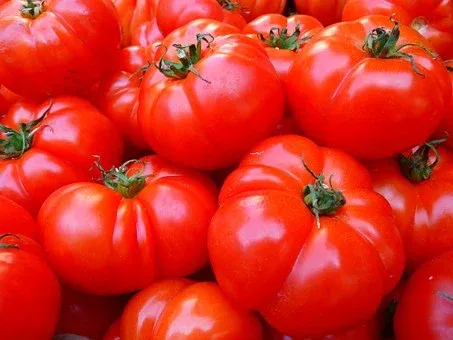
The tomato crop appears to get bigger and better every year, and it all happens at once! Fresh tomatoes are delicious in salads, sandwiches, and cooking, but it might be tough to use them all up while they are still in season.
Over the years, I've learned a few techniques for preserving and preparing tomatoes that allow me to make the most of my fruit all year. Here are a few of my personal favorites.
Freezing
Freezing tomatoes is the most straightforward technique to keep them for later use. Before you put them in the freezer, cut and skin them so that you can just dump a bag into whatever you are making instead of a tin of chopped tomatoes. To accomplish this, follow the steps below.
To loosen the skins
Place them in a large mixing bowl with boiling water. Allow it sit for a few minutes before carefully removing the tomato from the water, slitting the skin at the base and peeling back the skin.
Chop them up
removing any stems or hard bits, and portion them out into freezer-friendly quantities. If desired, little tomatoes can be frozen whole and used in meals like Mediterranean roasted vegetables.
Passata
The Italian word passata refers to a smooth purée of sieved tomatoes that has had all of the seeds and skins removed. Passata can be used in soups, gravies, and stews if you want the rich sweet flavor of tomatoes but don't want the pieces or seeds that can make them bitter. Because it takes a long time to prepare, it's best to do it in large amounts.
Method
As before, skin the tomatoes, slice them up, and remove the stalks. Cook until all the tomatoes are mushy in a big pan over medium heat, then mash with a potato masher to loosen all the seeds.
Using a sieve, strain the entire batch, preserving the juice and pulp while discarding the seeds.
The completed product can then be bottled or refrigerated for later use.
Filling and bottling (Canning)
If your freezer space is limited or you don't want to entrust your full year's supply of food to the freezer, bottling is a smart option, especially in locations where power outages are a possibility.
There are a few different ways to achieve this, as well as some specialized equipment if you wish to use it. It is preferable to keep things simple, so here's how to do it:
Use hot jars after sterilizing them in the oven. If you're bottling hot food, place the tomatoes, passata, or sauce in the jars and cover with a tight, airtight lid.
Place the jars in a deep saucepan with enough water to cover them. Bring to a boil for an hour, then remove the jars and set aside to cool.
If you're using vintage jam jars, the small button on the lid should drop in when it cools, totally sealing the jar.
This will serve as a guide to go about preserving some food stuff at home. Let me know if you find this helpful.
Source of potential plagiarism
There is reasonable evidence that this article has been spun, rewritten, or reworded. Posting such content is considered plagiarism and/or fraud. Fraud is discouraged by the community and may result in the account being Blacklisted.
Guide: Why and How People Abuse and Plagiarise
If you believe this comment is in error, please contact us in #appeals in Discord.